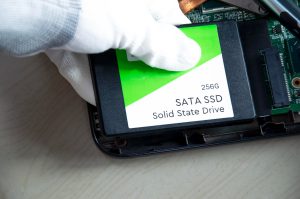Imagine spending weeks on a project, only to lose it all because your computer decided to crash. No warning. No saving grace. If you’ve experienced this before, you know the frustration that comes with it. Automatic backups are one of the simplest ways to avoid disasters like this. They’re easy to overlook until it’s too late.
By setting up a proper automated backup system, you don’t have to remember to do it yourself. It just happens. Whether you’re saving family photos, business files, or personal work, knowing your data is protected without having to think about it can take away a lot of stress. An automated setup, once running, can do all the heavy lifting in the background.
Understanding Automated Backup Systems
An automated backup system is a tool or process that copies your files on a regular schedule without you having to do anything. Once it’s set up, it runs by itself. That means you don’t have to worry about forgetting to hit save or drag your files into the right folder.
Manual backups often get skipped because life gets busy, or they simply slip your mind. Automated systems fix that. They ensure your data is backed up no matter what you’re doing or where you are. This keeps your files safe from damage, loss, or even theft. Think of it like cruise control for your file safety.
There are different ways to back up your files automatically:
– Cloud-based backups: These store your files on a server online. You can access them from anywhere, and they usually run in the background as long as you have internet.
– On-premises backups: These use a local storage device like an external hard drive. They’re great if you don’t want your files stored online.
– Hybrid backups: This setup uses both cloud and on-prem options. It gives you extra security with two separate copies in different places.
Each type has pros and cons depending on how you use your devices, your internet connection, and your storage needs. If you work with sensitive information, you might want extra security. If you’re backing up personal files, cloud-based might be the simpler option. Either way, picking the right type is the first step to doing it right.
Steps To Setting Up An Automated Backup System
Getting started with automated backups doesn’t take much tech know-how. What matters most is picking the right tools and setting them up to fit your routine without making things complicated. A backup solution should be like a good sidekick: reliable, quiet, and always ready.
Here’s a simple way to set one up:
1. Choose your backup software
Pick software that works with your operating system and meets your needs. Some options are built into computers, while others are third-party services. Look for one that allows automatic scheduling and lets you pick what files or folders to back up.
2. Set your backup schedule
Choose a schedule based on how often you make changes. For things like business files or active projects, daily backups may be ideal. For more static data, weekly backups could be enough. The most important thing is consistency.
3. Use encryption
Make sure your backup tool includes encryption features. This keeps your files protected from prying eyes. Whether it’s stored locally or in the cloud, keeping it locked down adds a layer of privacy that’s worth having.
4. Run a backup test
Once your system’s in place, test it. Make sure it actually saves what you need and allows for a smooth restore. You don’t want to find out something’s broken when you’re already facing data loss.
5. Set notifications
If something fails, you’ll want to know. Some software can alert you if a scheduled backup doesn’t run. These kinds of features help avoid missed backups without needing to monitor everything yourself.
Once everything’s set up, check in on it from time to time, but otherwise, let it do its thing. A well-built system will take care of the rest quietly in the background.
Common Backup Issues And How To Fix Them
Sometimes, even with automatic systems, things don’t run perfectly. Backups might skip a day, run out of space, or simply fail without warning. That’s why it’s good to know what the common hang-ups look like and how to deal with them before they lead to bigger problems.
One major issue is limited storage. Whether in the cloud or on a physical drive, space runs out. If your backup system stops because there’s no room, it won’t start again unless you clear or expand it. Check your storage once a month and remove old backups you don’t need or upgrade your plan if things add up.
Another challenge is missed backups. Sometimes your computer’s off when a backup is scheduled, or a connection drops. If your tools offer missed backup alerts, you’ll stay in the loop. Otherwise, check your logs or settings to confirm things are working the way they should.
Costs can also creep up. Cloud options that start free may charge more as you add storage. Local solutions may need new hardware. If budget’s a concern, consider what’s worth keeping long-term and what you can store elsewhere.
To avoid these issues:
– Keep an eye on storage with a regular check-in
– Review your backup logs after any major update or crash
– Automate notifications so you know if something’s off
– Schedule backups during times your computer is typically on
– Organize backups so only what you truly need gets copied
When you take these steps, issues become easier to manage without much effort. You don’t need to be tech-savvy. Just stay aware of how your system’s running.
Making The Most Of Your Backup System
Once your setup is running well, the key is keeping it that way. Like anything, tech needs a little attention now and then to stay reliable. You don’t need to micromanage it, but ignoring it for long stretches might catch up with you.
To help your system stay reliable over time, keep your backup software updated. New versions often fix bugs and patch security gaps. If your system doesn’t update on its own, set a reminder to check periodically. It only takes a few minutes and goes a long way.
You should also check backup results every so often. Even if you’re getting alerts and everything looks fine, take a look just to be sure. Restoring a test file now and then gives peace of mind that your real files will be there if something happens.
Keeping multiple backup copies across different locations is another smart move. Don’t rely on just one backup. If your physical drive fails or your cloud account has an issue, a second copy in a different place gives you a solid fallback.
One client once stored all their data on a local backup system that was set up perfectly, but the building had severe water damage during a freeze. They hadn’t saved anything off-site. A backup isn’t just about having a copy. It’s about having that copy somewhere safe. That’s why even secure local storage should be paired with something off-site, like a cloud platform.
Stay Protected And Save Your Data
Protecting your data doesn’t have to be hard or time-consuming. Once your automated system is in place, it becomes part of your routine without much effort. You stop worrying about what happens if your laptop crashes or you lose your phone because you know your files are safe.
It’s easy to put off things like setup and maintenance. But a few minutes now could save you hours or even weeks down the line. Whether the files are for work or for personal use, the value of knowing they’re protected is huge.
As systems change and tools update, take time every few months to review your backup plan. Add new folders, remove old ones, and stay on top of habits that keep your system running strong. It means fewer surprises and more control, no matter what comes your way.
Backups aren’t just for big emergencies. They’re for everyday slip-ups, lost files, and tech glitches that can happen when you least expect them. Having a system in place that runs quietly but confidently can make all the difference.
Consider the peace of mind that comes with knowing your important files are safe against unexpected accidents. Having a reliable backup system in place is just one part of the puzzle. If you’re looking at securing your files even more or need help with data recovery in Vancouver, TeraDrive is ready to assist. Our team is here to make sure your data stays intact, no matter what.





